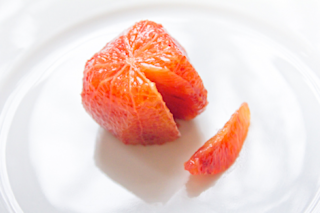Photo Credit: Catie Baumer Schwalb (Pitchfork Diaries) “Suprême” refers to the classic culinary technique of removing the flesh of citrus from the pith, or the white spongy layer in between citrus segments composed mainly of pectin and cellulose. Removing the pith, which is characterized by a distinctly bitter flavor, enhances the perceived sweetness in citrus fruit [1]. Though “suprême” may sound like a fancy-schmancy technique reserved for the finest of dining, citrus suprême can be found in common everyday foods such as mandarin orange slices on salads and garnishes in cocktails. Classic citrus suprême is made by cutting off the top and bottom of the fruit, removing the pith with a knife, and cutting each segment out from between the membrane. However, this produces a lot of waste, as it is not possible to completely clean the pith of the fruit. It is also not efficient for large-scale industrial processing. ...
The Science of Perfect Citrus Suprême
Discover the citrus suprême technique and learn how pectinase enhances juice production quality by breaking down pith efficiently.
More on Discover
Stay Curious
SubscribeTo The Magazine
Save up to 40% off the cover price when you subscribe to Discover magazine.
Subscribe













